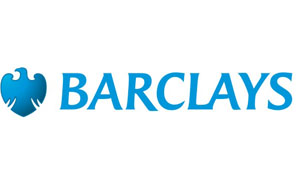 WHAT better news can there be at a time like now than that Barclays Bank Zambia Plc has financed Maamba Collieries Limited (MCL)’s 300 megawatts coal fired power plant at a cost of US$828 million.
WHAT better news can there be at a time like now than that Barclays Bank Zambia Plc has financed Maamba Collieries Limited (MCL)’s 300 megawatts coal fired power plant at a cost of US$828 million.
Similarly, what more do critics and prophets of doom want from Government that has not only listened to the cries of the people but has gone ahead to provide more incentives to make Zambia food secured.
President Lungu has just announced an increase of K5 to the floor price to make it K75 per 50 kg bag of maize to encourage more farmers and help the poor in rural areas make ends meet. What more do armchair critics want?
Back to Barclays Bank, so good is this news, given that Zambia like other African countries is currently experiencing a critical deficit in power due to poor rainfall.
The power deficit solely attributed to poor rain fall, therefore, means that an alternative power generation is a sure panacea and lasting solution to challenges Africa is faced with.
Electricity is the main factor in industries like mining, manufacturing and agricultural operations.
It is also the most depended upon commodity for domestic purposes in every household, schools and health institutions.
If power was that critical, then there is need to ensure that it is available at all times.
The said financing will enable MCL to complete the construction of 2x150MW and the construction of the new transmission line to connect to the national grid, a move we feel will, at least stabilise power supply.
Of great interest is that this particular power project will depend on coal, which is a timely energy generator in times like this when the only dependable source has failed.
We learn that Zambia currently has more than 780 million tonnes of coal which was awaiting would-be investors in thermal power generation to utilise it.
It was Commerce, Trade and Industry Minister Margaret Mwanakatwe who recently called on the private sector to invest in thermal energy as a way to supplement the current hydropower generation by Zesco.
True to Ms Mwanakatwe’s observation, investment in thermal energy would help manufacturing industries continue with production of goods and services during power cuts.
That observation was made against the fact that most manufacturing companies were dependent on Zesco power supply for operations and that most of them were now losing out due to power outages.
With that kind of an intervention, cries of most entrepreneurs, local and even other established manufacturing and production firms will be addressed.
Barclays Bank Zambia managing director Saviour Chibiya is then spot on to note that construction of the 300MW coal fired plant will help alleviate the national electricity deficit.
Such a move is indeed a significant step towards diversifying power generation in the country and a further assurance to keep players of uninterrupted element to development.
The Barclays project could also pave the way for more Sinosure backed infrastructure transactions beyond the 300MW of new power capacity.
Already, experts say that the project would contribute approximately 17 per cent to Zambia’s installed electricity generation capacity.
It is a timely project poised to unlock economic growth potential in the region where current electrification rates were in the region of 20 per cent.
The project is also expected to take a cue from this transaction of how deals could be structured covering multiple geographies, in the infrastructure space at such times.
We feel that the Barclays Bank project would not only address the challenges of power shortage in Zambia but safeguard lives and property.
We also wish that many other players could start thinking about investing in critical areas that contribute to national economic development.






